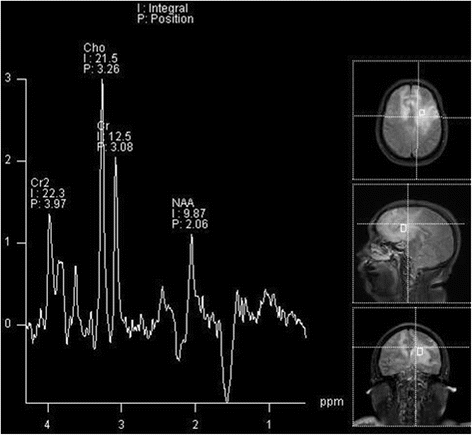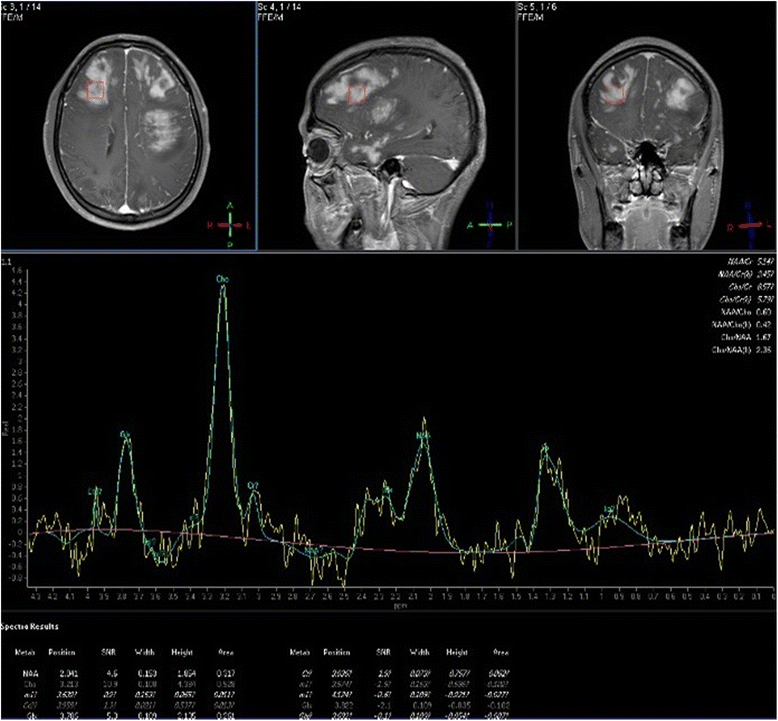Lymphomatosis cerebri: a rare variant of primary central nervous system lymphoma and MR imaging features
- PMID: 28982392
- PMCID: PMC5629795
- DOI: 10.1186/s40644-017-0128-2
Lymphomatosis cerebri: a rare variant of primary central nervous system lymphoma and MR imaging features
Abstract
Background: Lymphomatosis cerebri (LC) is a rare variant of primary central nervous system lymphoma (PCNSL), characterized by diffuse infiltration without the formation of a discrete mass. The diagnosis of LC is a challenge because the imaging findings are atypical for lymphoma. The purpose of present study is to investigate MRI characteristics and clinical features of LC and potentially facilitate an early and accurate diagnosis of this often-missed disease.
Methods: Seven patients (average 44 years, 19-58 years) with LC proved basing on MRI and histology were retrospectively reviewed the clinical data and cerebral MR imaging findings.
Results: The common presenting symptoms were cognitive decline, behavioral disturbance, gait disturbance. All patients had both deep and lobar lesion distribution, and two of them had infratentorial involvement. Lack of contrast enhancement and subtle patchy enhanced pattern were observed in two and three patients, respectively. The remaining two patients presented multiple patchy enhancement. Most of the lesions were slightly hyperintense to normal brain on DWI as well as hyperintense on ADC maps. Three patients presented a pattern of marked decrease of NAA/Cr, increase of Cho/Cr, and two of the three cases showed increased Lip/Cr and Lac/Cr on MRS.
Conclusions: We conclude that diffuse bilateral lesions especially in deep and lobar region including white and gray matter, without enhancement or with patchy enhancement, marked decrease of NAA/Cr and increase of Cho/Cr, and increased Lip/Cr and Lac/Cr are suggestive of LC. Prompt recognition of these imaging patterns may lead to early diagnosis of LC and brain biopsy with improved prognosis.
Keywords: Diffusion weighted imaging; Lymphomatosis cerebri; Magnetic resonance imaging; Magnetic resonance spectroscopy; Primary central nervous system lymphoma.
Conflict of interest statement
Ethics approval and consent to participate
All patients provided an informed consent for MRI examination and for the use of personal data. Therefore, for this retrospective analysis ethics committee approval was not requested. All data, including images, were anonymized and all patients provided their consent for the use of personal data.
Consent for publication
All the patients have given a written consent to use their data for research purpose, including publications in medical journals.
Competing interests
The authors declare that they have no competing interests.
Publisher’s Note
Springer Nature remains neutral with regard to jurisdictional claims in published maps and institutional affiliations.
Figures






References
-
- Izquierdo C, Velasco R, Vidal N, Sanchez JJ, Argyriou AA, Besora S, Graus F, Bruna J. Lymphomatosis cerebri: a rare form of primary central nervous system lymphoma. Analysis of 7 cases and systematic review of the literature. Neuro-Oncology. 2016;18:707–715. doi: 10.1093/neuonc/nov197. - DOI - PMC - PubMed
MeSH terms
Grants and funding
LinkOut - more resources
Full Text Sources
Other Literature Sources
Medical

